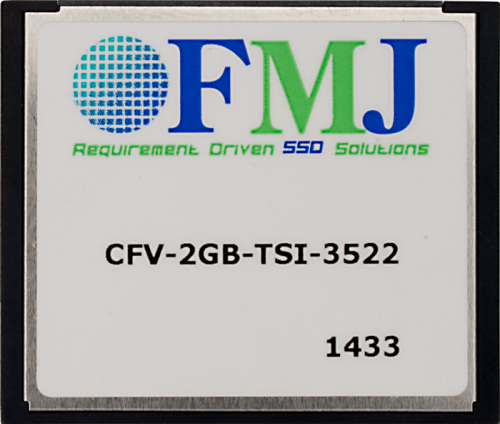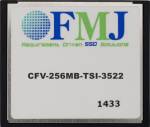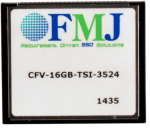
Overview
The CFMC2G is a 2 GB, industrial-grade CompactFlash card that has been selected specifically to provide optimum performance and extreme reliability. It is used with the CFM100, NL115, NL116, or CF1 to expand a datalogger's memory and to transport data, camera images, programs, and operating systems without having to use a PC.
Read MoreTechnical Description
A PC can read/write data stored on the CFMC2G by using either the CF1 CompactFlash adapter or 17752 Reader/Writer.
Images

Compatibility
Please note: The following shows notable compatibility information. It is not a comprehensive list of all compatible products.
Dataloggers
| Product | Compatible | Note |
|---|---|---|
| CR1000 (retired) | ||
| CR200X (retired) | ||
| CR216X (retired) | ||
| CR3000 | ||
| CR5000 (retired) | ||
| CR800 (retired) | ||
| CR850 (retired) | ||
| CR9000X (retired) |
Additional Compatibility Information
Card Format
Currently, the CFMC2G is formatted as FAT32; our contemporary data loggers require this format for the card to work as expected. Cards purchased before August 2008 were formatted as FAT16. Our CC640 camera (retired), the CR9000 dataloggers (retired), and CR5000 dataloggers with older operating systems need the FAT16 format. A card formatted as FAT32 can be reformatted as FAT16.
Specifications
| Manufacturer | FMJ |
| Card Type | Industry standard Type I CF form factor |
| Storage Capacity | 2 GB |
| Card Format | FAT32 |
| Temperature Range |
|
| Compliance | RoHS compliant |
| Dimensions | 4.28 x 3.64 x 0.33 cm (1.69 x 1.43 x 0.13 in.) |
| Weight | 10 g (0.35 oz) |
Resources and Links
Technical Papers
Listed Under
FAQs for
Number of FAQs related to CFMC2G: 5
Expand AllCollapse All
-
With OS 7 or greater and the TableFile() instruction with Option 64, CompactFlash cards greater than 2 GB can be used. For more information, see the “A Better Way to Write High-Frequency Data to 16 GB and Smaller CF Cards” application note.
-
Save the data to a CompactFlash card. Transfer the data from the CR5000 to the PC by removing the card from the CR5000 and inserting it into the PC.
-
With operating system 25 or greater, the CR3000 works with CF cards in sizes up to 16 GB using the TableFile() instruction and TFOption 64. For earlier versions of the operating system, the largest compatible CF card size is 2 GB.
For more information, see the “A Better Way to Write High-Frequency Data to 16 GB and Smaller CF Cards” application note.
-
The most reliable method of formatting a CompactFlash (CF) card is to format it using a PC and specifying FAT32.
Case Studies
Due to its geographical position close to the Black Sea, the local climate in Moldova......read more
Articles and Press Releases
Newsletter Articles
Privacy Policy Update
We've updated our privacy policy. Learn More
Cookie Consent
Update your cookie preferences. Update Cookie Preferences


